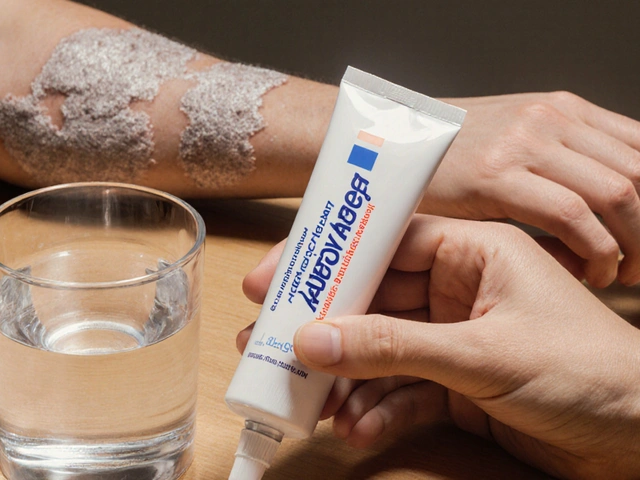Conjugated Estrogens – What You Need to Know Before You Start
If you’ve heard doctors mention "conjugated estrogens" for menopause or hormone therapy, you might wonder what exactly they are and if they’re right for you. In plain English, conjugated estrogens are a mix of natural estrogen molecules taken from animal sources, usually horses. They’re sold under brand names like Premarin and are meant to replace the estrogen your body stops making during menopause.
People turn to them for hot flashes, night sweats, vaginal dryness, and even bone loss prevention. But they also come with a list of possible side effects and risks, so you need a clear picture before deciding.
What Are Conjugated Estrogens?
Conjugated estrogens are a blend of several estrogen types—estrone sulfate, equilin sulfate, and a few others. Because they’re derived from pregnant mare urine, they’re considered “natural” but are still a hormone medication.
They come in pills, patches, creams, and injectables. The form you choose often depends on how your body reacts, your lifestyle, and what your doctor thinks will work best. For example, a patch can give a steady dose without daily pills, while a cream lets you apply it only where you need relief.
Dosage varies. Most women start with a low dose, like 0.3 mg daily, and adjust based on symptoms. Your doctor will check blood work, blood pressure, and any heart or bone health concerns before setting a plan.
How to Use Conjugated Estrogens Safely
First, always get a prescription. Buying these hormones off the internet or from unverified sources can land you a counterfeit product (and that’s a health nightmare). A legit pharmacy will ask for a valid doctor’s note and may verify your prescription.
Take the medication exactly as directed. If you’re on a pill, swallow it with food to avoid stomach upset. For patches, apply to clean, dry skin on the lower abdomen or thigh and rotate sites each week.
Watch for side effects. Common ones include mild nausea, breast tenderness, and occasional headache. More serious signals—like sudden vision changes, chest pain, or leg swelling—need immediate medical attention because they could hint at blood clots or heart issues.
Regular check‑ups are key. Your doctor will likely schedule blood pressure checks, lipid panels, and maybe a mammogram each year while you’re on therapy. If you develop any new health problems, report them right away.
Consider alternatives if you have risk factors. Women with a history of blood clots, breast cancer, or liver disease might be steered toward non‑estrogen options such as selective estrogen receptor modulators (SERMs) or lifestyle tweaks like diet and exercise.
Finally, know when to stop. Many women taper off estrogen after a few years once symptoms settle. Stopping abruptly can cause a rebound of hot flashes, so a gradual reduction under doctor supervision is the safest route.
Bottom line: conjugated estrogens can be a solid tool for easing menopause symptoms, but they’re not a one‑size‑fits‑all solution. Talk openly with your healthcare provider, follow the dosing guidelines, and stay on top of your routine labs. That way you get relief without unnecessary risk.
Buy Conjugated Estrogens (Premarin) Online: Safe Purchase Guide, Tips & Trusted Sources
Step-by-step guide to buying Conjugated Estrogens (Premarin) online safely, including key tips, trusted sources, facts, and advice for a smooth purchase in 2025.






